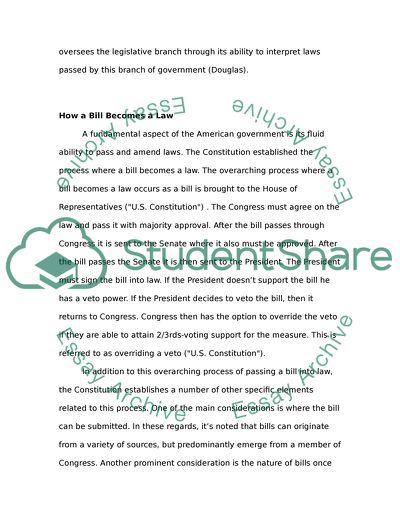Separation of powers and checks and balances AND bill become law Essay. Retrieved from https://studentshare.org/history/1583037-separation-of-powers-and-checks-and-balances-and-bill-become-law
Separation of Powers and Checks and Balances AND Bill Become Law Essay. https://studentshare.org/history/1583037-separation-of-powers-and-checks-and-balances-and-bill-become-law.


